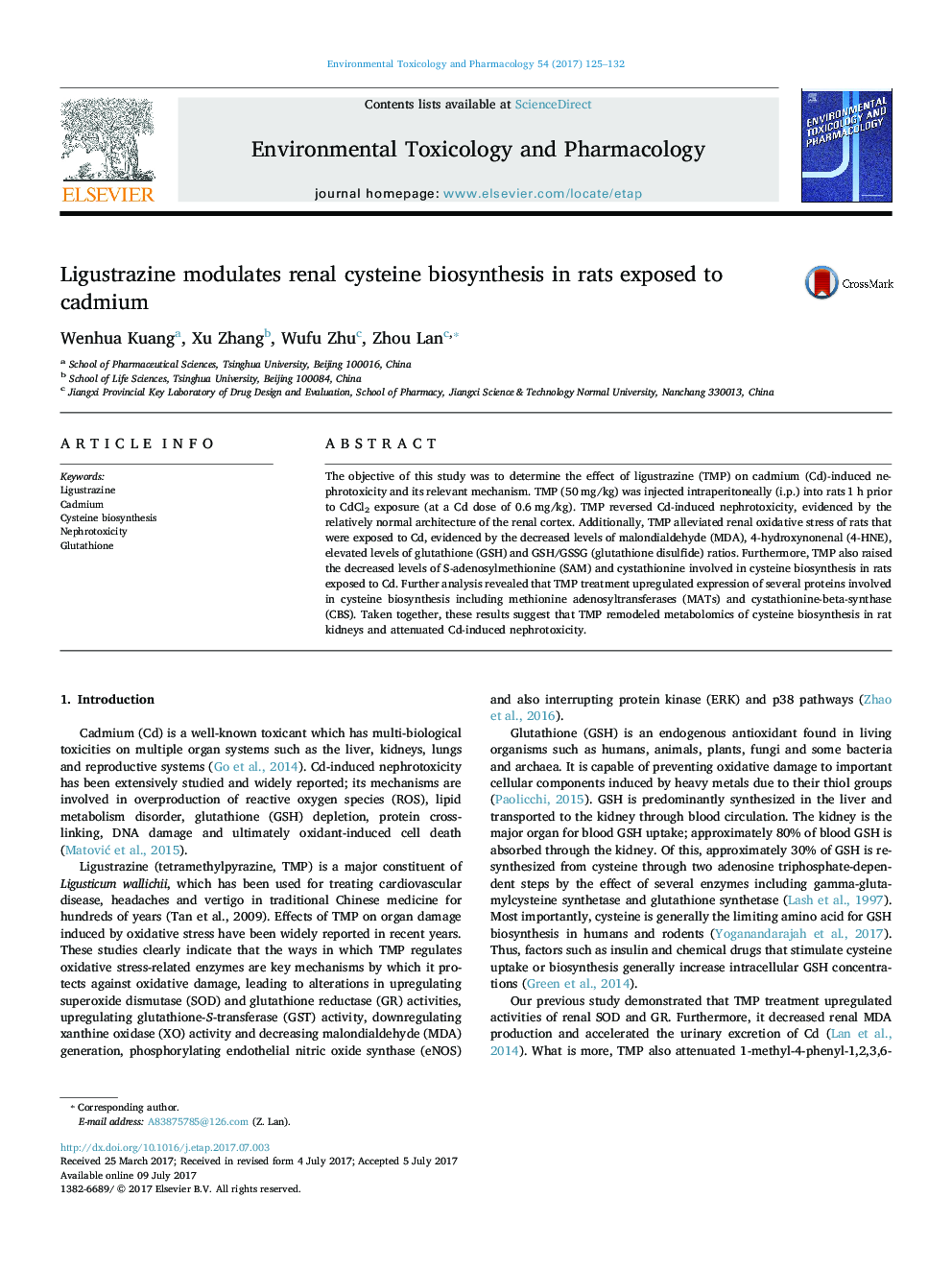| Article ID | Journal | Published Year | Pages | File Type |
|---|---|---|---|---|
| 5559748 | Environmental Toxicology and Pharmacology | 2017 | 8 Pages |
â¢Cadmium exposure alters metabolomics of cysteine biosynthesis in rat kidneys.â¢Ligustrazine modulates renal cysteine biosynthesis in rats exposed to cadmium.â¢Ligustrazine upregulates MATs and CBS involved in cysteine biosynthesis.
The objective of this study was to determine the effect of ligustrazine (TMP) on cadmium (Cd)-induced nephrotoxicity and its relevant mechanism. TMP (50Â mg/kg) was injected intraperitoneally (i.p.) into rats 1Â h prior to CdCl2 exposure (at a Cd dose of 0.6Â mg/kg). TMP reversed Cd-induced nephrotoxicity, evidenced by the relatively normal architecture of the renal cortex. Additionally, TMP alleviated renal oxidative stress of rats that were exposed to Cd, evidenced by the decreased levels of malondialdehyde (MDA), 4-hydroxynonenal (4-HNE), elevated levels of glutathione (GSH) and GSH/GSSG (glutathione disulfide) ratios. Furthermore, TMP also raised the decreased levels of S-adenosylmethionine (SAM) and cystathionine involved in cysteine biosynthesis in rats exposed to Cd. Further analysis revealed that TMP treatment upregulated expression of several proteins involved in cysteine biosynthesis including methionine adenosyltransferases (MATs) and cystathionine-beta-synthase (CBS). Taken together, these results suggest that TMP remodeled metabolomics of cysteine biosynthesis in rat kidneys and attenuated Cd-induced nephrotoxicity.
